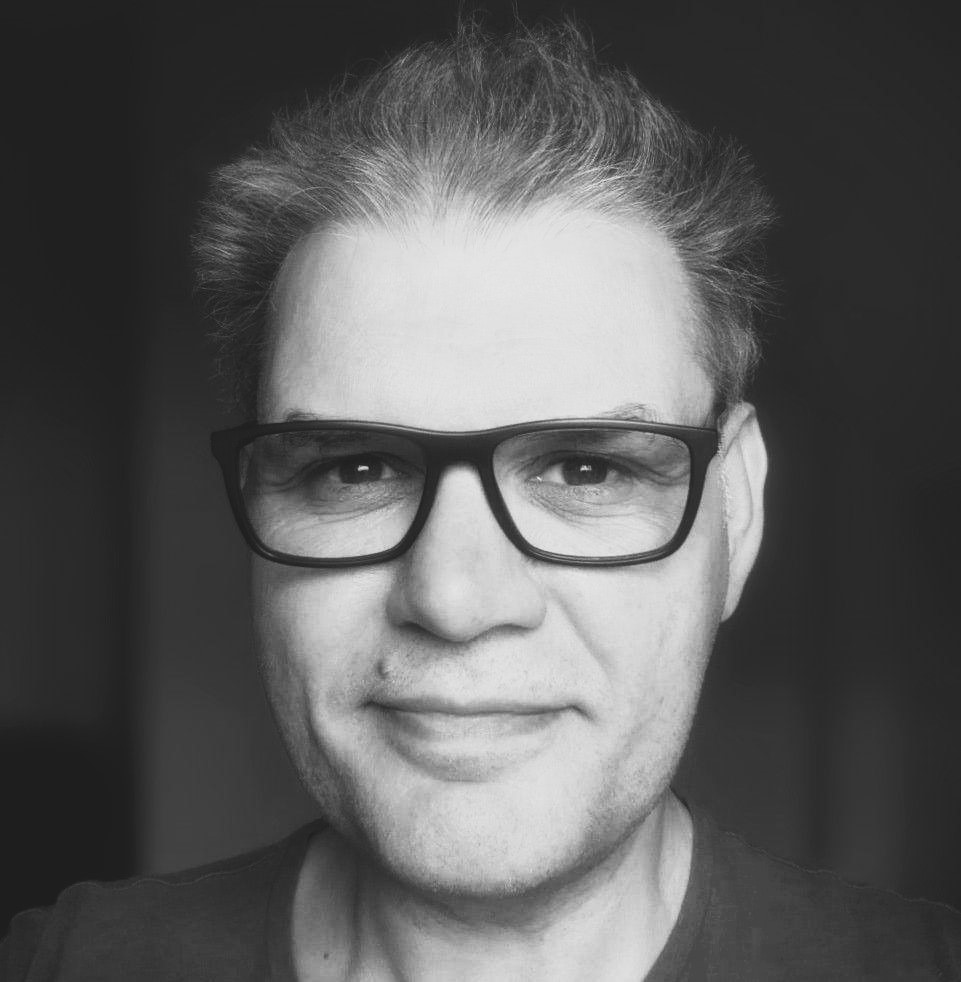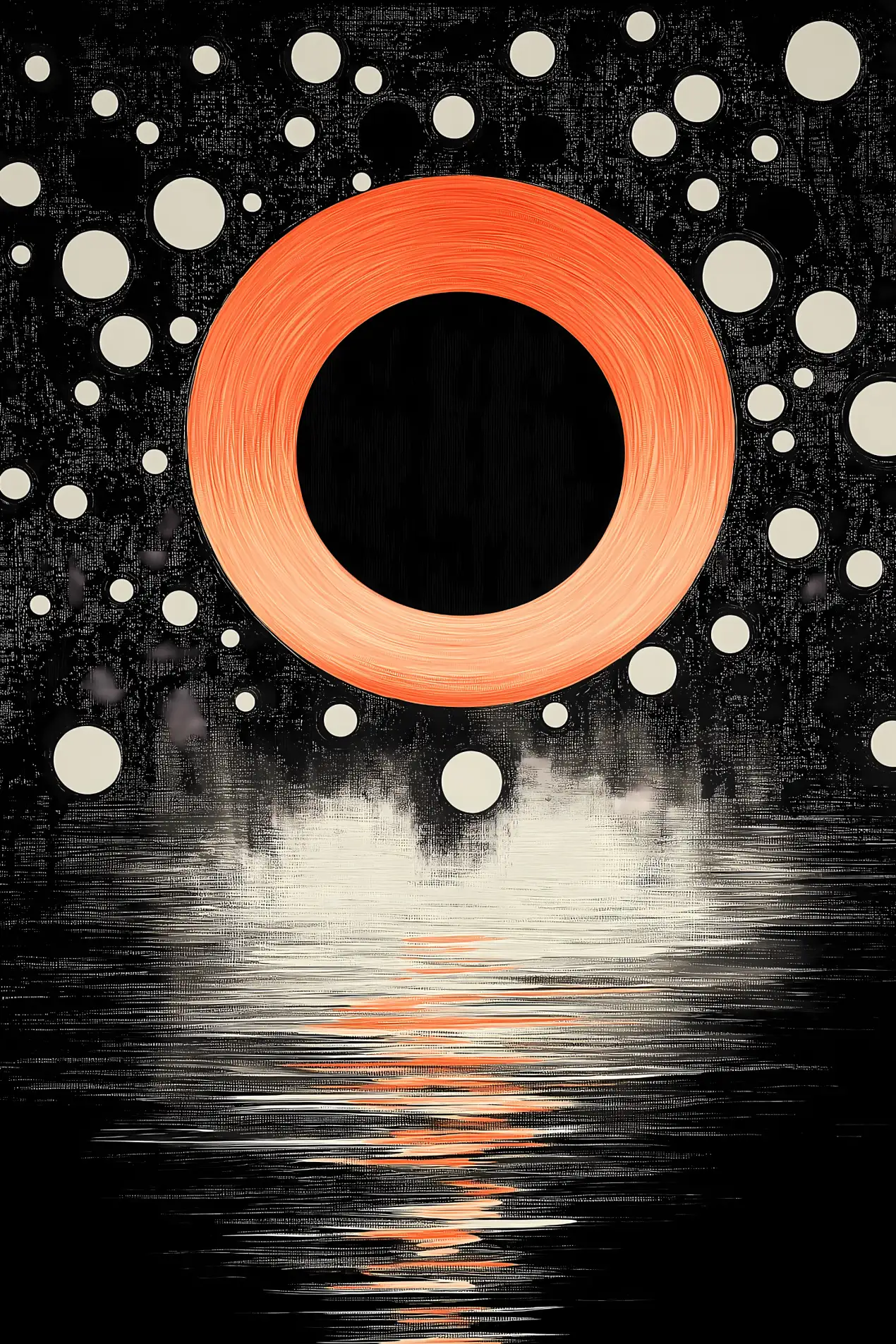Your basket is currently empty!
Agis’ Origin Story

My journey as a digital artist began with a fascination for computers, imaging technology, and their potential to create visuals and digital art. My first use of computers dates back to 1984, when I programmed a Commodore 64 to render my first name, AGIS, using colour-changing sprites that danced across the screen before settling into formation. My first attempt at computer graphics was an experiment in turning a black-and-white photograph of a woman into a full-colour image on an Amiga 500 — a moment that sparked a lifelong exploration of how creativity and technology might intertwine.
From these humble beginnings grew an evolving passion: to use digital art not merely to replicate reality, but to reinterpret it — to provoke emotion, stir thought, and explore the unseen.
In Blazing Minds, I merge artificial intelligence — powered by machine learning and neural networks — with art, poetry, philosophy, and psychology. Each letter I write and every work I create is crafted to expand perspectives and provide a quiet space for reflection.
In a world increasingly shaped by technology, my art becomes a dialogue between ancient and modern, instinct and precision, the human and the machine. This dialogue is shaped by my journey across cultures and disciplines — from traditional graphic design to NFTs and generative systems, and from solitary practice to collaborations with fellow artists exploring how art and technology together can reveal new ways of seeing.
Early Influences and Career Journey
Raised in Greece, I was surrounded by a culture rich in arts and philosophy. The teachings of Socrates, Plato, and the Stoics deeply shaped my worldview and continue to influence my artistic practice.
My journey started in 1994 when I began formal studies in Computer Graphics and later in Visual Communication Design. I was fascinated by the idea that images could convey ideas and evoke emotions, much like the dialogues and metaphors of the ancients once did.
In the early 2000s, I travelled to London to study visual effects and animation for film and television. There, I encountered new visual languages, tools, and disciplines that expanded my concept of what digital art could be.
Professionally, I worked across publishing, advertising, and information technology, learning to craft stories, communicate visually, and navigate creative challenges. Yet, as much as I loved the technical aspects of my work, I felt a growing need to express something deeper — to speak not only through design but to speak to the soul, to engage with questions of identity, resilience, and inner transformation.
This need eventually led me to the creation of Blazing Minds, an ongoing series of art letters that explore the human condition and allow me to connect with others — and with my own inner self — on a more profound level.
The Birth of Blazing Minds
Art as a Tool for Self-Discovery
In Blazing Minds, I explore the convergence of art, technology, psychology, and philosophy. My letters and artworks invite people to pause — to observe not only the world, but their own internal landscapes.
The themes in my work include transformation, resilience, and the duality of light and shadow within us all. My aim is to provoke and ignite curiosity; to open a window through which one might glimpse something previously hidden.
The art I create is vibrant, sometimes abstract, and always layered with meaning. In A Total Eclipse, for example, inspired by Socratic wisdom, the celestial image of an eclipse becomes a metaphor for perspective — for those moments when obscurity gives way to illumination, and we begin to see anew.

Artificial intelligence allows me to expand my artistic practice. It enables me to move beyond the boundaries of established art forms and push past the limits of conventional tools to create something unique and immersive.
Integrating AI Technology into Art
A Contemplative Approach
The integration of artificial intelligence into my work is intentional. It reflects my interest in the convergence of psychology, technology, and artistic flow.
I view artificial intelligence as a collaborative tool — a mechanism to enhance my creative vision and visual language. This technology challenges me to reframe my approach to art and consider possibilities that extend beyond my hand. Although my process is still grounded in human experience and emotion, when technology is used thoughtfully, it becomes a medium for deeper emotional and intellectual engagement.
To strengthen this foundation, I am currently undertaking the Computer Science 50 course at Harvard University — equipping myself with technical fluency that will continue to expand the boundaries of my artistic practice.
I understand that some may be sceptical of artificial intelligence’s role in art, particularly within spiritual and artistic communities where tradition holds significant value. My intention is not to disrupt but to enhance — to introduce a fresh perspective that honours our soul’s journey. I believe that when used thoughtfully, artificial intelligence can inspire not detachment but awakening. It can be a catalyst for spiritual exploration, self-empowerment, and development, and prompt deeper questions not only into the nature of art but also into what it means to feel, to perceive, and to be human.
Art as a Path to Spirituality and Self-Empowerment
At its heart, my work is about the human spirit — our capacity for self-awareness, transformation, and growth. For me, spirituality is not a belief system, but a way of seeing — the pursuit of truth and self-knowledge.
This is why much of my work revolves around themes of enlightenment and self-discovery. I see art as a mirror; one that reflects parts of ourselves we may not easily see, asking us to confront our inner truths and evolve.
In my upcoming publication, The Blazing Minds Art Book, I will be sharing both visual work and personal reflections. This book is for the curious, the seekers, the non-conforming — those who see art not as decoration, but as disruption: a journey rather than a destination.
Closing Thoughts
Socrates once said, “There is only one good, knowledge, and one evil, ignorance.” This principle sits at the heart of my work.
To create is to search. To look beneath the surface. To illuminate not only what is, but what might be. Art, in its highest form, is a practice of revelation.
Through Blazing Minds, I hope to encourage others to explore the unknown, to turn inward, and to see art not only with their eyes, but with their being.
Let us walk the path together.

